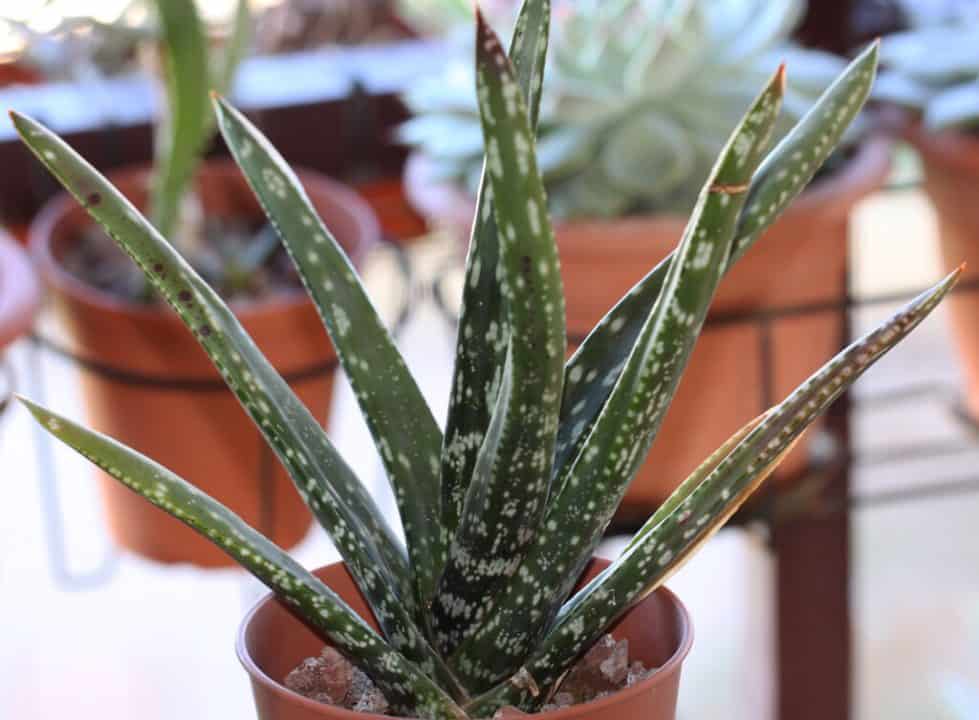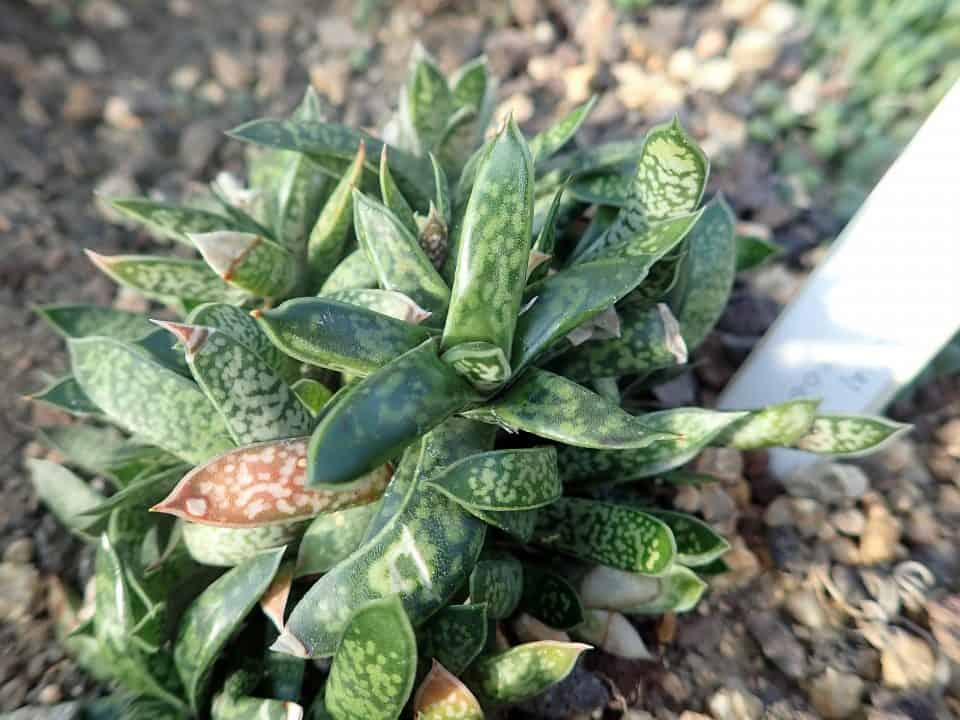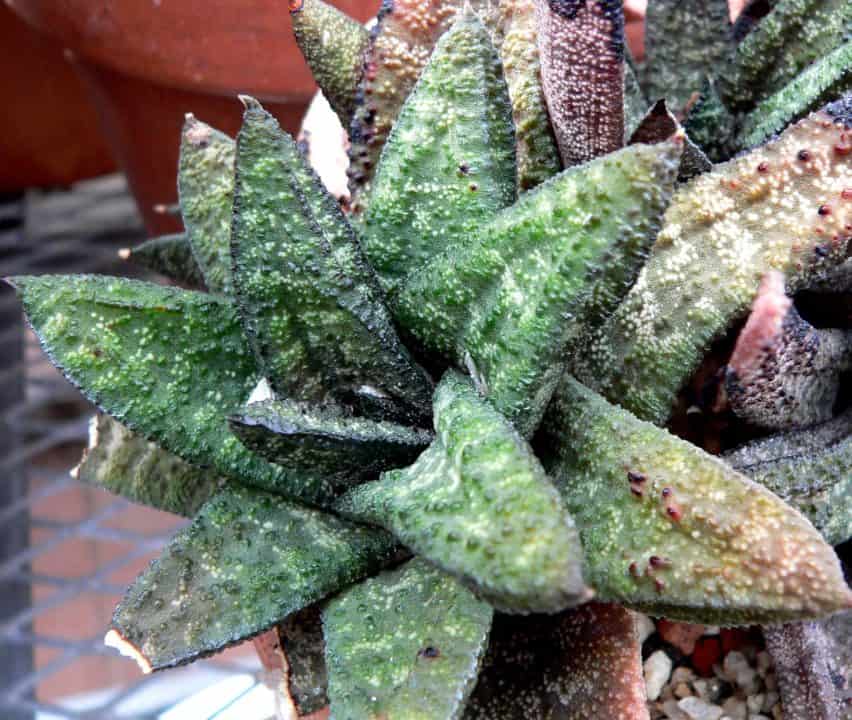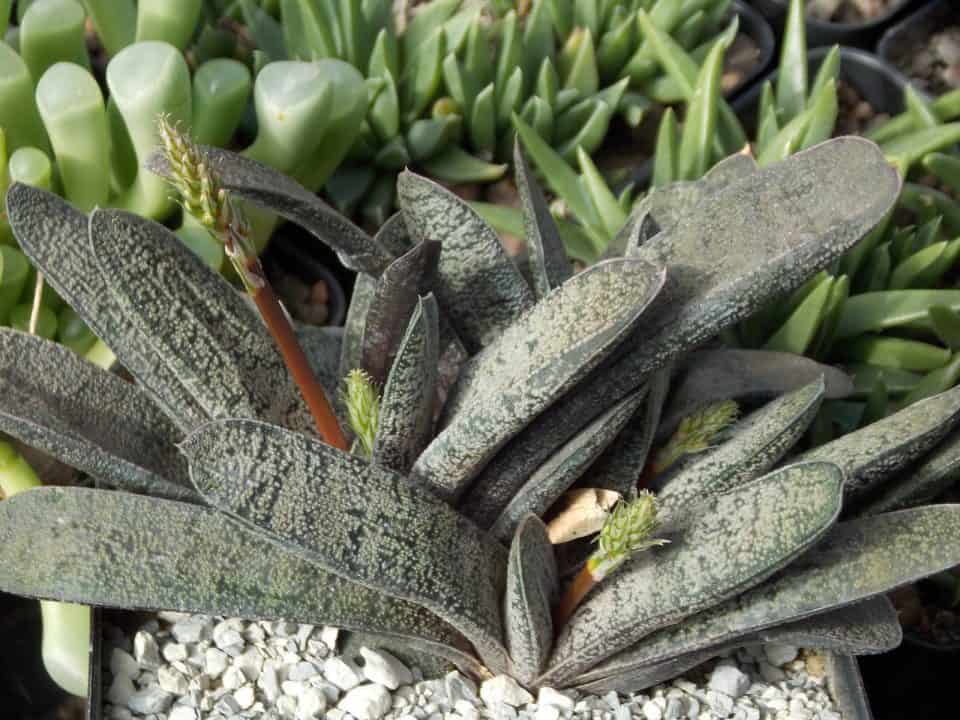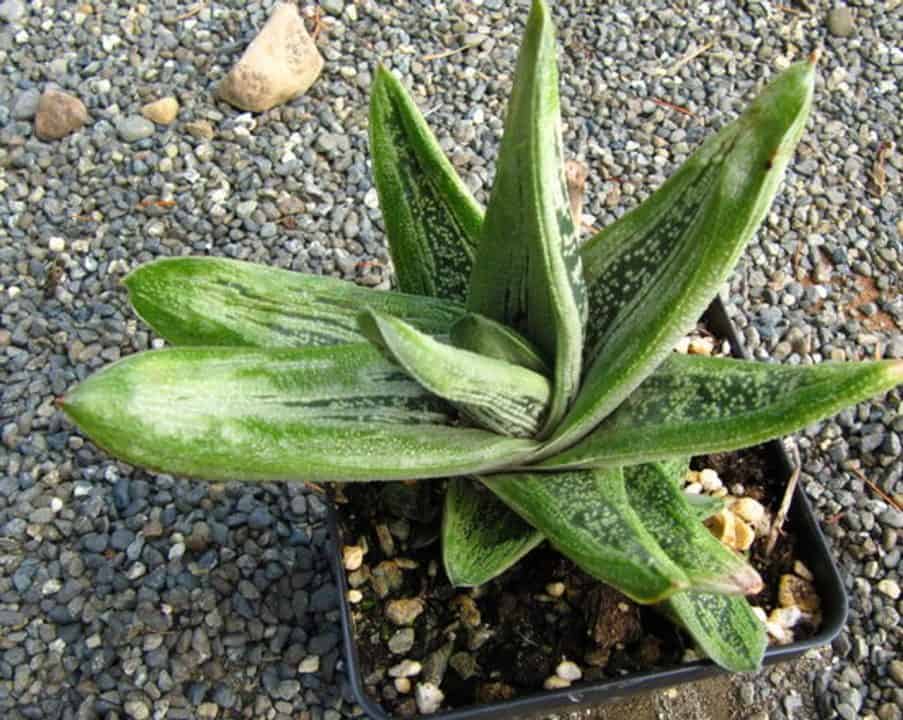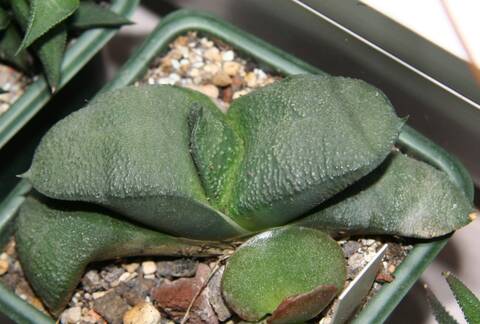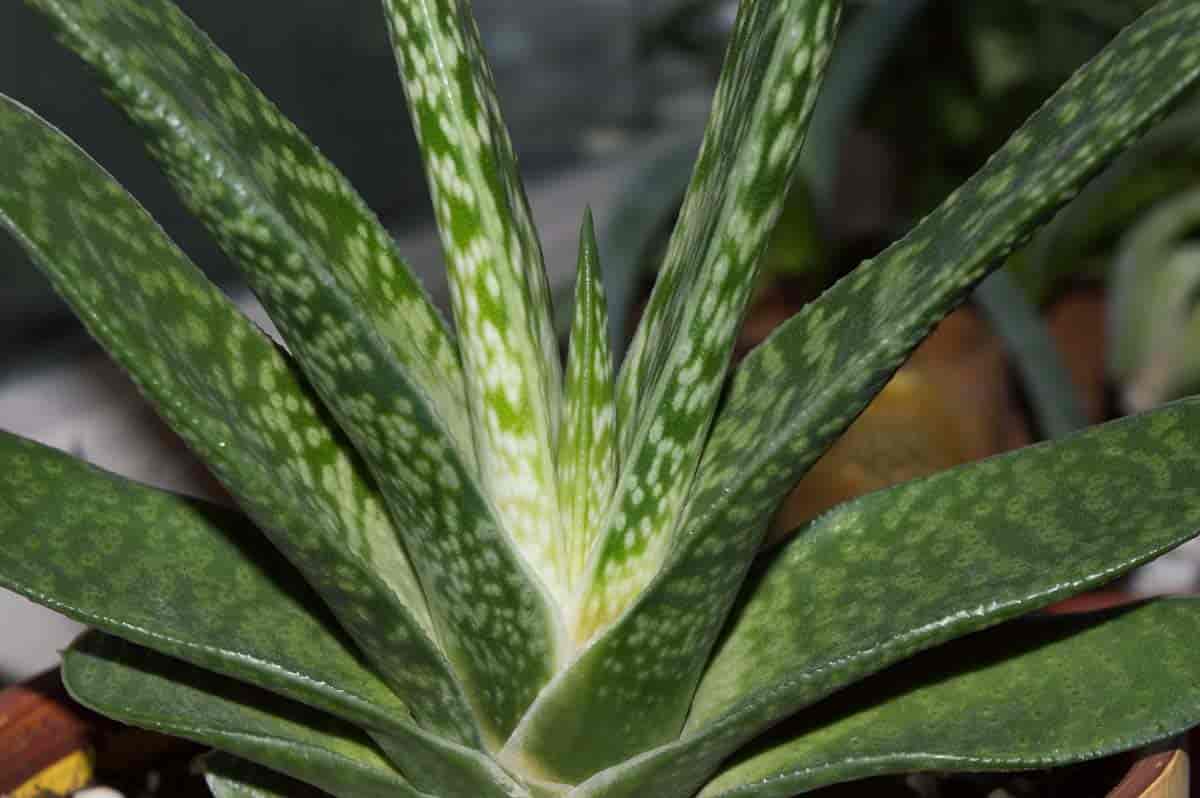Gasteria pulchra is an extremely unique succulent that belongs to the Gasteria genus of plants. These succulents are indigenous to South Africa, but they grow equally well in almost any place with ample sunlight and relatively low humidity.
Although they’re small plants, they’re also quite attractive, featuring intricate patterns and textures that make them eye-catching plants even when they’re at rest.
Getting the most out of your Gasteria pulchra requires proper care and attention to ensure the plant remains happy and healthy over time. By adhering to these easy-to-follow guidelines, you can have beautiful Gasteria pulchra plants in your home or office without much effort on your part!
They’re fairly forgiving plants as long as they are given appropriate growing conditions, so you don’t need to worry too much about getting it wrong. However, learning a little more about their needs will help you better maintain them, ensuring your plants grow large and strong over time.
Origin and distribution
Gasteria pulchra is a native of South Africa. It is found in the Eastern Cape, KwaZulu-Natal, and Mpumalanga provinces. This aloe relative grows in rocky, dry areas. It is also common in cultivation and makes an excellent houseplant.
Gasteria plants are drought-tolerant as long as they are not allowed to go completely dry for too long. In summer, water about once every two weeks; in winter, wait until the soil has dried out before watering again. Overwatering will cause root rot and/or leaf spot.
Gasteria pulchra propagation
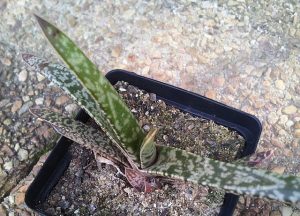
Gasteria pulchra is a beautiful, easy-to-grow succulent that is perfect for beginning gardeners. This plant can be propagated by offsets, leaf cuttings, or seeds. To propagate by offsets, simply remove the offset from the mother plant and pot it up in a well-draining cactus mix.
For leaf cuttings, cut a leaf from the mother plant at the base and allow it to callous over for a few days before potting it up. Once potted, water sparingly until the roots form. The easiest way to propagate this plant is through seeds. Simply sprinkle them on top of your planting medium and lightly cover them with sand.
They will germinate within two weeks. Keep moist and warm until they sprout. They are also easily propagated through leaf cuttings! Cut a leaf off of the stem at the base and leave it for about 2 weeks to callous over.
After 2 weeks, pot the cutting into well-draining soil and keep it moist but not too wet. Within 2 months you should see some new growth coming out from around where you cut it off! It takes gasteria pulchra roughly 3 years to reach maturity so don’t worry if you don’t see any progress initially!
Some people have said their plants have reached maturity after 4 years, so patience is key when growing these beautiful succulents. When your plant has grown tall enough (roughly 20 inches), it’s time to separate it into individual plants.
Gasteria pulchra care information
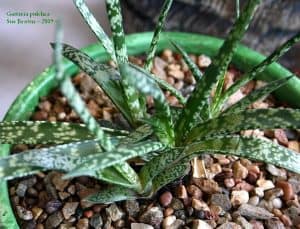
If you’re looking for a low-maintenance, easy-to-care-for succulent, the Gasteria pulchra is a great option. These South African natives are drought tolerant and can thrive in a wide range of lighting conditions, making them ideal for both indoor and outdoor gardens. Here are a few tips to help you get started with growing your own Gasteria pulchra
Light requirement
Gasteria pulchra is a succulent that does best in bright, indirect sunlight. If you live in an area with intense sunlight, it’s best to provide some shade for your plant. Gasteria pulchra can tolerate some direct sun, but too much will cause the leaves to scorch.
Soil/potting mix
Gasteria pulchra is not a fussy plant and will do well in most potting mixes as long as it has good drainage. A mix of two parts peat moss to one part perlite or sand is a good starting point.
You can also add a small amount of compost to the mix for added nutrients, but be careful not to overdo it. If you want to experiment with different types of soil, try adding some sphagnum moss, vermiculite, coconut coir, lime-free wood chips, or aged animal manure on top of your usual soil/potting mix and see how the gasteria responds.
Watering
Gasteria pulchra is a drought-tolerant plant, so it doesn’t need much water. In fact, too much water can be harmful. Water only when the soil is dry to the touch. During the winter, watering can be reduced even further. Let the plant go almost completely dry before watering again.
It’s better to under-water than over-water. When the summer comes around and your plant needs more water, you should increase the frequency of watering but not necessarily the amount of water given each time.
Fertilizer
Gasteria pulchra is a slow-growing succulent, so it doesn’t need much fertilizer. If you do choose to fertilize, use a succulent-specific fertilizer and apply it sparingly. You can also add compost to the soil to help it retain moisture. Over-fertilizing can cause the leaves to yellow and the plant to become leggy.
It’s best to keep this plant on the dry side. It can take over six months for the water to reach roots from the surface of an overturned pot, which means that this particular succulent prefers well-draining soil. It’s also important to note that gasteria plants cannot be exposed to temperatures below 50 degrees Fahrenheit.
Temperature
They can tolerate a wide range of temperatures, but will not do well if exposed to prolonged cold or dampness. In general, a temperature between 70-85 degrees Fahrenheit is ideal.
If you live in a cooler climate, you can grow gasteria pulchra indoors near a sunny window. Make sure that the plant gets at least six hours of sunlight per day and keep it away from drafts.
When growing Gasteria pulchra outdoors, the temperature should not fall below 60 degrees Fahrenheit at night or exceed 90 degrees during the day. Too much heat may also cause foliage to dry up or turn brown.
Humidity
Gasteria pulchra thrives in high-humidity environments. If you live in an area with low humidity, you can create a mini-greenhouse for your plant by placing it on a tray of pebbles and water. Be sure to mist your plant regularly, and keep an eye out for brown tips on the leaves, which is a sign of dehydration.
The ideal humidity range is between 40% and 80%. Too much humidity will result in plants that are soft and droopy; too little will cause plants to become brittle.
Pruning
Gasteria pulchra is a beautiful, easy-to-care-for succulent that originates from South Africa. These plants are known for their thick, fleshy leaves that grow in a rosette pattern.
Gasterias are slow growers, so they don’t require much pruning. When you do prune them, be sure to use clean, sharp scissors or a knife. Cut off any dead or dying leaves, as well as any that are excessively long. Make your cuts just above the center of the leaf.
When to repot
Gasteria pulchra should be repotted every two to three years, or when the plant becomes pot-bound. Be sure to use a well-draining potting mix and a pot with drainage holes. Repotting in the spring is best, as the plant is just coming out of its winter dormancy.
Dormancy/Winter rest
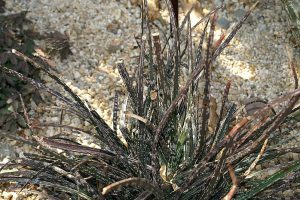
Gasteria pulchra plants enter a state of dormancy during the winter months. This is a natural process that helps the plant conserve energy and protect itself from cold weather.
During dormancy, the plant will stop growing and its leaves will turn brown. If you live in an area with harsh winters, it’s best to move your Gasteria pulchra indoors during this time. You can bring them back outside when they begin to grow again in the springtime.
Gasteria pulchra flower & fragrance
Gasteria pulchra is a beautiful, easy-to-grow succulent that produces lovely fragrant flowers. It’s important to know how to care for this plant so it can thrive and produce those magnificent blooms.
Growth rate
Gasteria pulchra is a fairly slow-growing plant, so don’t be alarmed if it doesn’t seem to grow much in its first year or two. Once it gets going, though, it can add several inches of growth each year.
Toxicity
Gasteria pulchra is not considered to be toxic to humans or animals. However, as with all plants, it is always best to err on the side of caution and keep this plant out of reach of children and pets. If ingested, seek medical attention immediately.
USDA hardiness zones
Gasteria pulchra thrives in USDA hardiness zones 9-11. It prefers a semi-shaded environment and should be watered evenly but infrequently. For best results, the soil should be allowed to dry between watering.
It can grow outdoors year-round in its appropriate zone, but it is a more suitable indoor plant. Keep the leaves dust-free by misting them occasionally with water or wiping them down with a damp cloth.
Pests and diseases
Gasteria pulchra is generally a healthy plant, but it can be susceptible to mealybugs and scale. If you see these pests on your plant, wipe them off with a damp cloth or cotton swab dipped in rubbing alcohol. If the infestation is severe, you may need to treat your plant with an insecticide.
Gasteria pulchra is also susceptible to root rot, so make sure the pot has good drainage and that the plant is not sitting in water. You should also remove any dead leaves from the plant.
Finally, if there are too many leaves on your plant for it to get enough light, prune some of them back.
